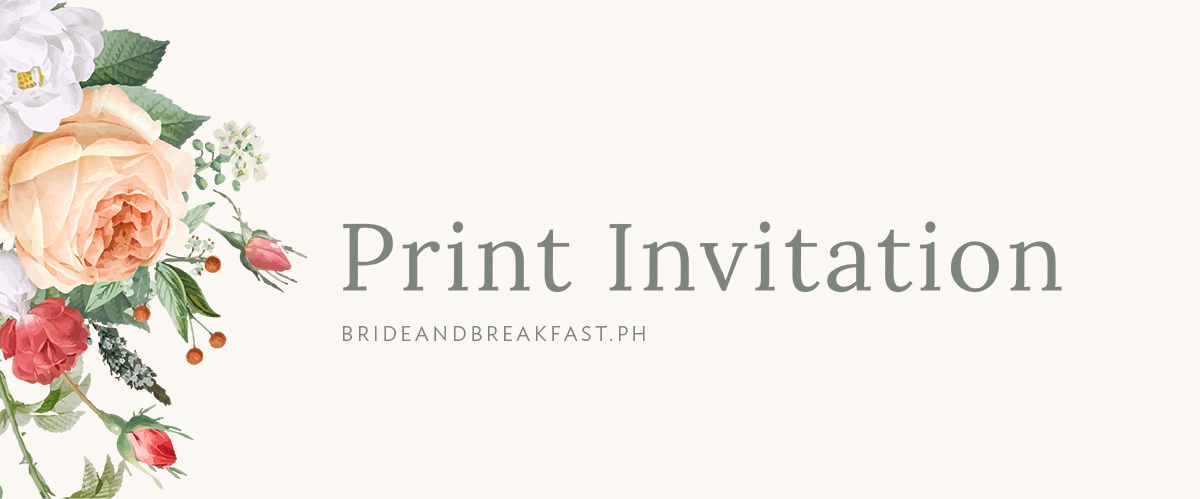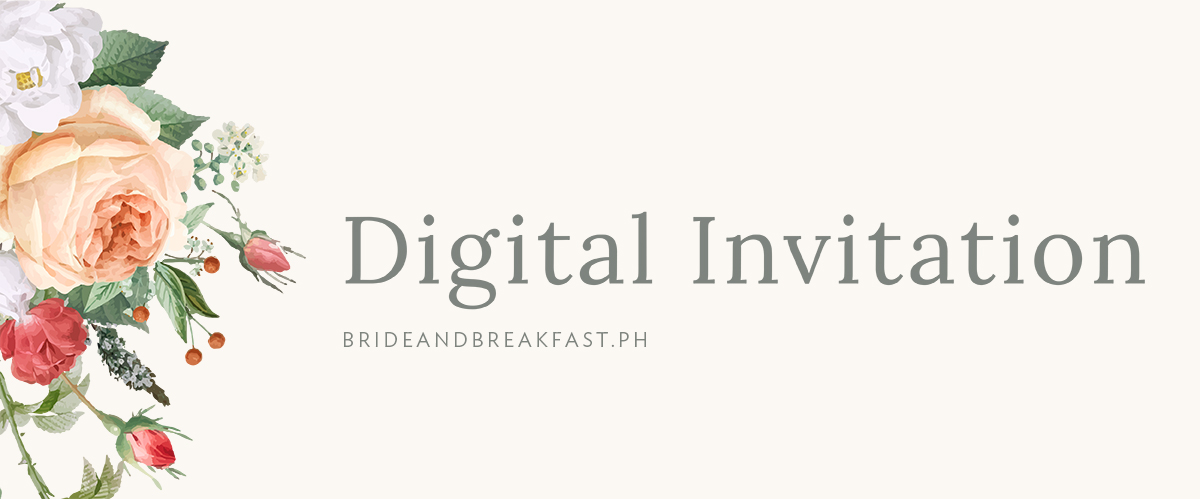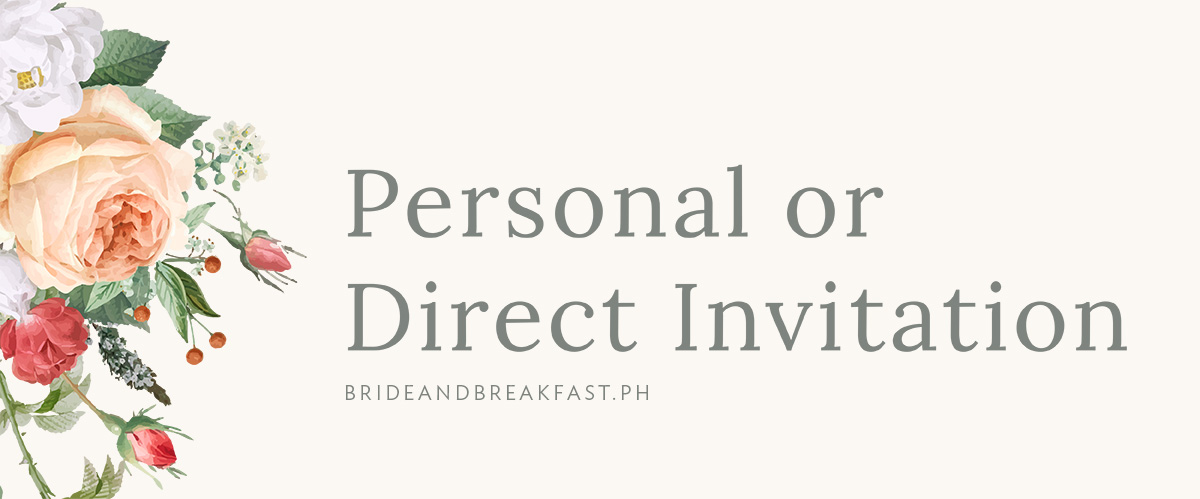It can be a real challenge, in this age of too many choices, to decide what type of wedding invitation to send out to your guests. There are online services that send out digital invitations (still lovely to look at, though impossible to hold), Facebook event invitations, casual text message invitations, or even calendar invitations via Google Calendar.
As someone who loves anything and everything to do with paper and print, the choice was easy for me to make when I was planning my wedding. The process of having a design put together by a graphic designer, working with a printer to choose paper stock, and going through a couple of sample prints before giving my approval was a real joy for me. Although sending out the invitations was a bit of a logistical struggle, it was nothing I personally wasn’t willing to go through. I also supplemented my invitation with a Facebook event (created well in advance, this also served as our “save the date”), just so I could ensure our guests were regularly reminded of the details.
Still, not every bride will be the same, of course, and not every set of guests will have the same needs. The default response to this dilemma of what kind of wedding invitation to employ is usually connected with the age of your guests (i.e. Titos and Titas receive print, while young guests don’t mind a casual digital invite), but in reality the approach is best treated with a little more nuance than that. With information coming at us from every direction and in so many different modes these days, how do we make sure we are heard?
Let’s take a look at the different types of invitations, the pros and cons of each, and who they’ll likely work best with:


Print invitations are any kind of invitation that can be physically held. The variety of designs and the unique ways to execute them are staggering.
Pros: Guests who receive print invitations tend to feel special, knowing the time and effort put into creating the invitation and sending them out. Print invitations help set the tone for your big day through the design you create and can be kept forever in a wedding album. For more traditional persons as well as those who appreciate paper, design, and the combination of the two, print invitations can be a real treat.
Cons: Print invitations are often a major cost, difficult to disseminate to those living overseas (sometimes even to those living close by because of risk of loss), and can easily be misplaced and forgotten if sent out too early. There is also the environmental aspect to consider here, as paper and energy are consumed in production.
Maximizing Effectivity: Send these out 6 – 8 weeks before your wedding to hit that sweet spot of just-enough-ahead so that it doesn’t slip out of your guests’ minds and not-too-close to the event that they won’t have time to prepare.

Digital invitations are presented and received on an electronic device and disseminated through varying platforms. As these are relatively new to the wedding invitation scene, it is helpful to divide them into a few distinct types that are most commonly used:
Electronic Post – Websites like Paperless Post provide design templates and offer the service of sending out your digital invitations via “paperless post.” Guests receive the invitation by e-mail and can go through the experience of opening the virtual envelope to reveal the digital invitation inside. Tracking of RSVP is included in the service as well.
- Pros: These are still visually appealing, environmentally friendly, and efficient (virtually instant) delivery. Tracking of responses is a breeze.
- Cons: Not everyone checks their e-mail accounts regularly or thoroughly and there’s always that small chance of your invitation ending up in the junk folder.
- Maximizing Effectivity: To be doubly sure that your invitation has been received and seen, send a text message or make a call to ensure your guests actually check their e-mail.
Facebook Event – Go to your Facebook account, create a new event, add a cover photo, input details, pick your guests (hopefully you’re friends with them all already), and send out the event invitation with the click of a button. You’ll pop up as a little red notification on your guests’ mobile phones and laptops!
- Pros: When you create an event on Facebook, you can see who is confirming or not and who are “Maybe” going, too. The attendees can visit the event page leading up to the event, and you as the host can post updates regularly to share more information like directions to the venue and even suggestions for attire. It’s a great way to keep notifying and re-notifying your guests so that they don’t forget!
- Cons: Facebook events are a little on the informal side and (believe it or not) not everyone on earth actually has a Facebook account!
- Maximizing Effectivity: Be an active host and interact with your guests through the event. Tip: you could use also Facebook as a supplement to your full invitation for sending out reminders or addressing questions guests may have (especially if you are having a destination wedding).
Google Calendar Invitation – Similar to a Facebook Event, Google Calendar allows you to create an event and add guests by e-mail address. This invitation, if accepted, is added to your guests’ Google Calendar and integrated across all devices.
- Pros: This is efficient, easy to do, and you can be sure that your guests will get reminders from Google.
- Cons: Often associated with business and productivity, using Google Calendar as your sole method of sending out wedding invitations can seem a little cold and impersonal. To repeat the obvious: some people just won’t like this and others won’t know how it works at all.
- Maximizing Effectivity: It’s difficult to mess this one up, but you may want to supplement it with the Facebook Event option so that you can share more details.

Personally asking your guests over a meal, making a phone call, and sometimes even by sending a text message–this method of inviting guests is always best supplemented with either a print or digital invitation to avoid confusion and to aid your guests’ memory. You can sit down to dinner with important guests, make calls to relatives and friends living abroad, and use text messaging to remind your guests of the date and details. It is rare that a purely verbal invitation is considered sufficient in and of itself.
Pros: Verbally expressing your desire to have them present at your wedding can make guests feel extra special.
Cons: If you fail to follow up on that verbal invitation, it may be misinterpreted as you changing your mind and/or forgetting about them. Text invitations on their own are at highest risk of being perceived negatively, and so we don’t recommend them as stand alone methods at all.
Maximizing Effectivity: Use your voice to add a personal touch to an invitation instead of falling back on this as a lazy, easy option. Combined with any of the first two types of invitation, you can achieve optimum effectivity for reaching your guests.
Figuring out the right kind of invitation to use for optimal efficiency of communication takes a little more effort than just deciding between the all-digital and all-print routes. If you feel strongly about lessening paper wastage but also want to see your fave Tita at the wedding, then you might consider a mixed approach. If, however, you are firmly and clearly attached to one kind of invitation, then by all means stick to it! It’s your wedding, after all.
When it comes down to it, if we’re talking effectivity and not just preference, then having a look at your wedding guest list first before deciding which type of invitation (or combination of types) works best for you is the best way to start. Remember: the point of having invitations is to get all of your most important friends and family to actually be at your wedding. Consider them in your communications and you’ll navigate the wide world of invitations just fine.









